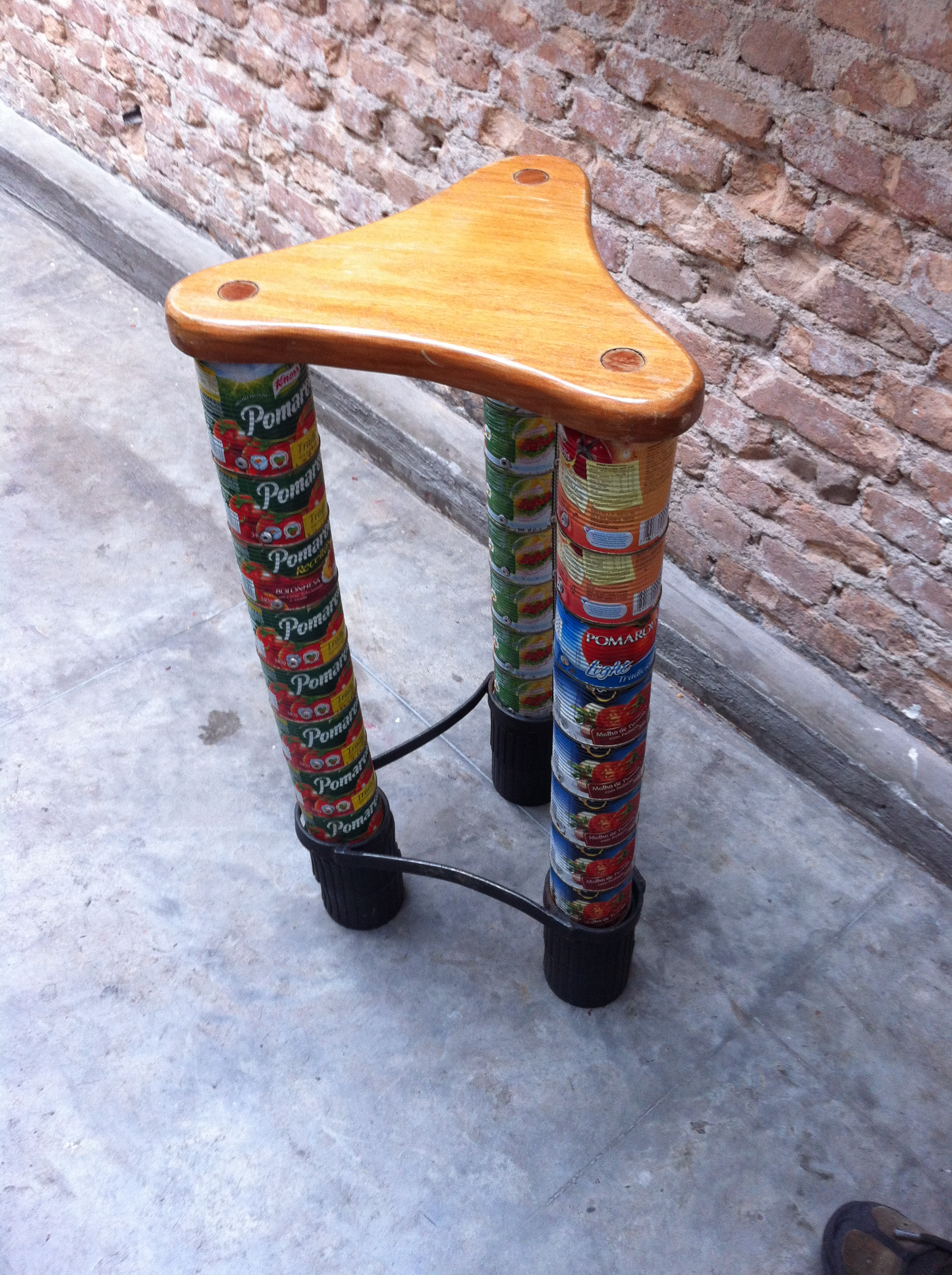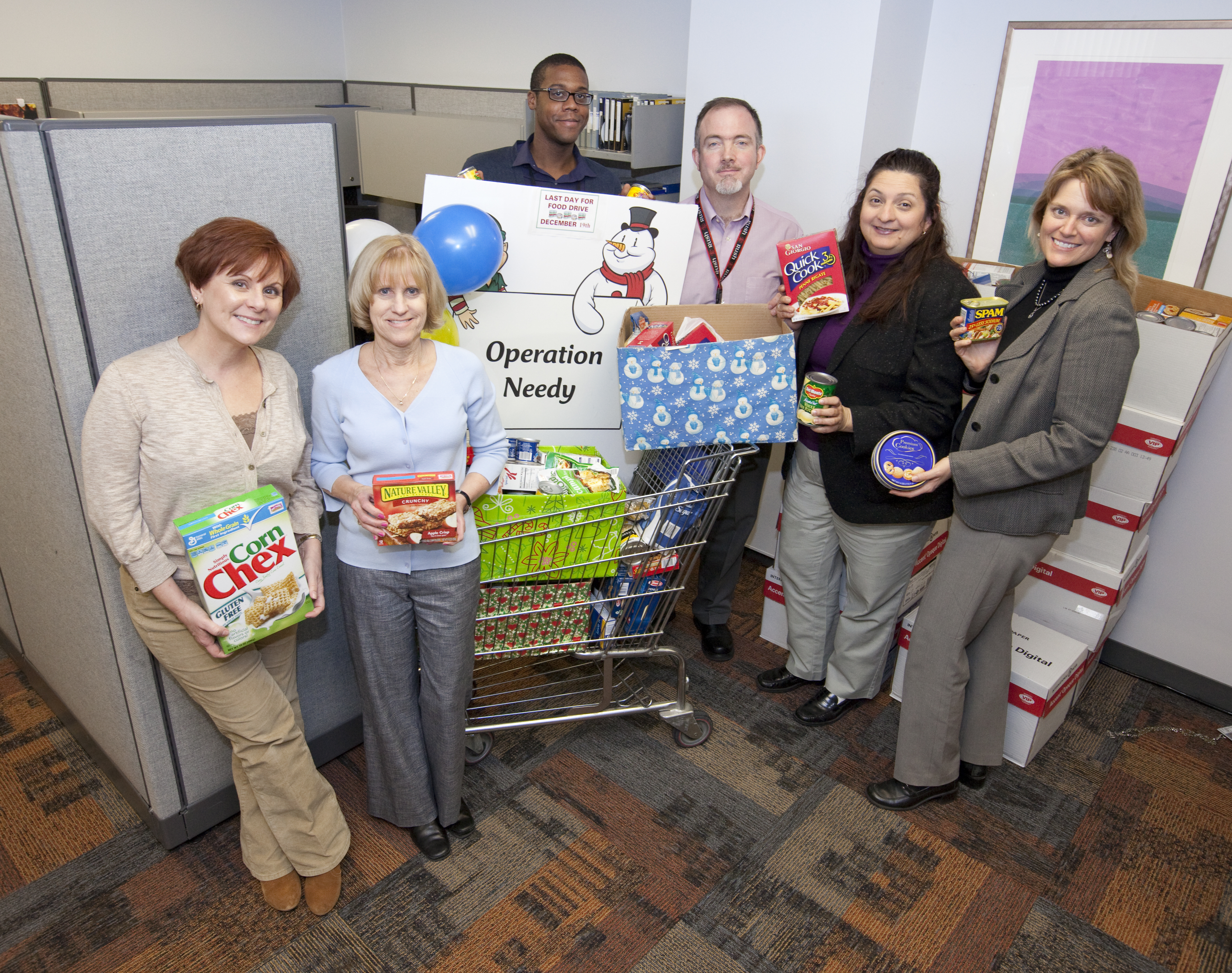|
Food Rescue
Food rescue, also called food recovery, food salvage or surplus food redistribution, is the practice of gleaning edible food that would otherwise go to waste from places such as farms, produce markets, grocery stores, restaurants, or dining facilities and distributing it to local emergency food programs. The recovered food is edible, but often not sellable. In the case of fresh produce, fruits and vegetables that do not meet cosmetic standards for shape and color might otherwise be discarded. Products that are at or past their " sell by" dates or are imperfect in any way such as a bruised apple or day-old bread are donated by grocery stores, food vendors, restaurants, and farmers markets. Other times, the food is unblemished, but restaurants may have made or ordered too much or may have good pieces of food (such as scraps of fish or meat) that are byproducts of the process of preparing foods to cook and serve. Also, food manufacturers may donate products that marginally fail quali ... [...More Info...] [...Related Items...] OR: [Wikipedia] [Google] [Baidu] |
Food Waste
Food loss and waste is food that is not eaten. The causes of food waste or loss are numerous and occur throughout the food system, during production, processing, distribution, retail and food service sales, and consumption. Overall, about one-third of the world's food is thrown away. A 2021 metaanalysis that did not include food lost during production, by the United Nations Environment Programme found that food waste was a challenge in all countries at all levels of economic development. The analysis estimated that global food waste was 931 million tonnes of food waste (about 121 kg per capita) across three sectors: 61 per cent from households, 26 per cent from food service and 13 per cent from retail. Food loss and waste is a major part of the impact of agriculture on climate change (it amounts to 3.3 billion tons of CO2e emissions annually) and other environmental issues, such as land use, water use and loss of biodiversity. Prevention of food waste is the highest ... [...More Info...] [...Related Items...] OR: [Wikipedia] [Google] [Baidu] |
Waste Hierarchy
Waste hierarchy is a tool used in the evaluation of processes that protect the environment alongside resource and energy consumption from most favourable to least favourable actions. The hierarchy establishes preferred program priorities based on sustainability. To be sustainable, waste management cannot be solved only with technical end-of-pipe solutions and an integrated approach is necessary. The waste management hierarchy indicates an order of preference for action to reduce and manage waste, and is usually presented diagrammatically in the form of a pyramid. The hierarchy captures the progression of a material or product through successive stages of waste management, and represents the latter part of the life-cycle for each product. The aim of the waste hierarchy is to extract the maximum practical benefits from products and to generate the minimum amount of waste. The proper application of the waste hierarchy can have several benefits. It can help prevent emissions o ... [...More Info...] [...Related Items...] OR: [Wikipedia] [Google] [Baidu] |
Self-sufficiency Economy
Autarky is the characteristic of self-sufficiency, usually applied to societies, communities, states, and their economic systems. Autarky as an ideal or method has been embraced by a wide range of political ideologies and movements, especially left-wing ideologies like African socialism, mutualism, war communism, communalism, swadeshi, syndicalism (especially anarcho-syndicalism), and left-wing populism, generally in an effort to build alternative economic structures or to control resources against structures a particular movement views as hostile. Conservative, centrist and nationalist movements have also adopted autarky in an attempt to preserve part of an existing social order or to develop a particular industry. Proponents of autarky have argued for national self-sufficiency to reduce foreign economic, political and cultural influences, as well as to promote international peace. Economists are generally supportive of free trade. There is a broad consensus among economists ... [...More Info...] [...Related Items...] OR: [Wikipedia] [Google] [Baidu] |
Self-sustainability
Self-sustainability and self-sufficiency are overlapping states of being in which a person or organization needs little or no help from, or interaction with, others. Self-sufficiency entails the self being enough (to fulfill needs), and a self-sustaining entity can maintain self-sufficiency indefinitely. These states represent types of personal or collective autonomy. A self-sufficient economy is one that requires little or no trade with the outside world and is called an autarky. Description Self-sustainability is a type of sustainable living in which nothing is consumed other than what is produced by the self-sufficient individuals. Examples of attempts at self-sufficiency in North America include simple living, food storage, homesteading, off-the-grid, survivalism, DIY ethic, and the back-to-the-land movement. Practices that enable or aid self-sustainability include autonomous building, permaculture, sustainable agriculture, and renewable energy. The term is also applied to ... [...More Info...] [...Related Items...] OR: [Wikipedia] [Google] [Baidu] |
Food Potential
Food distribution is the process where a general population is supplied with food. The Food and Agriculture Organization (FAO) considers food distribution as a subset of the food system. The process and methodology behind food distribution varies by location. Food distribution has been a defining characteristic of human behavior in all societies, and recordings of food distribution date back for thousands of years. Most governments and societies are highly shaped by the systems created to support food distribution. There are a multitude of risk factors that can affect food distribution. War, economic failure, political problems, and weather conditions all play a role in determining the efficiency of any food system. Two recent examples of war and economic failure impacting food distribution includes the decline of food distribution in Japan during World War II and food recession in Sub-Saharan Africa during the late 1970s and early 1980s. In both cases, food distribution was hi ... [...More Info...] [...Related Items...] OR: [Wikipedia] [Google] [Baidu] |
By-product
A by-product or byproduct is a secondary product derived from a production process, manufacturing process or chemical reaction; it is not the primary product or service being produced. A by-product can be useful and marketable or it can be considered waste: for example, bran, which is a byproduct of the milling of wheat into refined flour, is sometimes composted or burned for disposal, but in other cases, it can be used as a nutritious ingredient in human food or animal feed. Gasoline was once a byproduct of oil refining that later became a desirable commodity as motor fuel. The plastic used in plastic shopping bags also started as a by-product of oil refining. In economics In the context of production, a by-product is the "output from a joint production process that is minor in quantity and/or net realizable value (NRV) when compared with the main products". Because they are deemed to have no influence on reported financial results, by-products do not receive allocations of ... [...More Info...] [...Related Items...] OR: [Wikipedia] [Google] [Baidu] |
Shelf Life
Shelf life is the length of time that a commodity may be stored without becoming unfit for use, consumption, or sale. In other words, it might refer to whether a commodity should no longer be on a pantry shelf (unfit for use), or no longer on a supermarket shelf (unfit for sale, but not yet unfit for use). It applies to cosmetics, foods and beverages, medical devices, medicines, explosives, pharmaceutical drugs, chemicals, tyres, batteries, and many other perishable items. In some regions, an advisory ''best before'', mandatory ''use by'' or ''freshness date'' is required on packaged perishable foods. The concept of expiration date is related but legally distinct in some jurisdictions. Background Shelf life is the recommended maximum time for which products or fresh (harvested) produce can be stored, during which the defined quality of a specified proportion of the goods remains acceptable under expected (or specified) conditions of distribution, storage and display. Accordi ... [...More Info...] [...Related Items...] OR: [Wikipedia] [Google] [Baidu] |
Unusually Shaped Fruits And Vegetables
Unusually shaped fruits and vegetables have a shape not in line with its normal body plan. While some examples are just oddly shaped, others are heralded for their amusing appearance, often because they resemble a body part such as the buttocks or genitalia. Pareidolia can be common in vegetables, with some people reporting the appearance of religious imagery. Causes Vegetables usually grow into an unusual shape due to environmental conditions. Damage to one part of the vegetable can cause the growth to slow in that area while the rest grows at the normal rate. When a root vegetable is growing and the tip is damaged, it can sometimes split, forming multiple roots attached at one point. If a plant is in the primordium (embryonic development) stage, damage to the growing vegetable can cause more extreme mutations. The unusual shape can also be forced upon the vegetable. In Japan, farmers of the Zentsuji region found a way to grow square watermelons by growing the fruits in glass ... [...More Info...] [...Related Items...] OR: [Wikipedia] [Google] [Baidu] |
Upcycling
Upcycling, also known as creative reuse, is the process of transforming by-products, waste materials, useless, or unwanted products into new materials or products perceived to be of greater quality, such as artistic value or environmental value. Description Upcycling is the opposite of downcycling, which is the other part of the recycling process. Downcycling involves converting materials and products into new materials, sometimes of lesser quality. Most recycling involves converting or extracting useful materials from a product and creating a different product or material. The terms upcycling and ''downcycling'' were first used in print in an article in SalvoNEWS by Thornton Kay quoting Reiner Pilz and published in 1994. ''Upsizing'' was the title of the German edition of a book about upcycling first published in English in 1998 by Gunter Pauli and given the revised title of ''Upcycling'' in 1999. The German edition was adapted to the German language and culture by Johannes ... [...More Info...] [...Related Items...] OR: [Wikipedia] [Google] [Baidu] |
Food Donation
A food drive is a form of charity that is conducted by a group of individuals or a corporation to stockpile and distribute foodstuffs to people who cannot afford food. Overview Food drives are operated in order to stock food banks that distribute food to homeless people, soup kitchens, vulnerable seniors, orphanages, refugees, and victims of disasters. There are also food drives to help people hold feasts on Christmas and Thanksgiving. Many are organized by community organizations, nonprofits, churches, and even individuals. Criticism Many people involved in charity work are critical of the inefficiency of food drives. Emergency food providers are able to buy surplus stock from the food industry at a significant discount, Katherina Rosqueta of the Center for High Impact Philanthropy estimating it at 5% of retail price. Instead of buying canned food at store prices and physically donating it, a monetary donation to the same value could be used to acquire a much greater amount of ... [...More Info...] [...Related Items...] OR: [Wikipedia] [Google] [Baidu] |
Prevention And Valorisation
Prevention may refer to: Health and medicine * Preventive healthcare, measures to prevent diseases or injuries rather than curing them or treating their symptoms General safety * Crime prevention, the attempt to reduce deter crime and criminals * Disaster prevention, measures taken to prevent and provide protection for disasters * Pollution prevention in the US, activities that reduce the amount of pollution generated by a process * Preventive maintenance, maintenance performed to prevent faults from occurring or developing into major defects * Prevent strategy, a scheme in the UK to report radicalisation * Risk prevention, reducing the potential of loss from a given action, activity and/or inaction * Risk management, the identification, assessment, and prioritization of risks in business Other uses * ''Prevention'' (magazine), an American healthy lifestyle magazine * ''Prevention'' (album), a 2009 album by the Scottish indie rock band De Rosa * Prevent defense, an Ameri ... [...More Info...] [...Related Items...] OR: [Wikipedia] [Google] [Baidu] |


.jpg)



